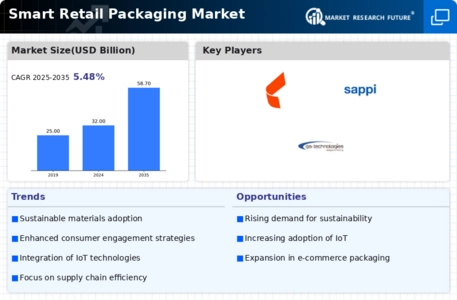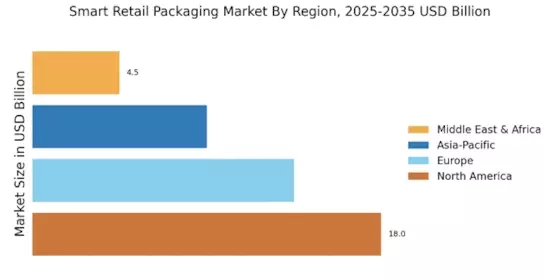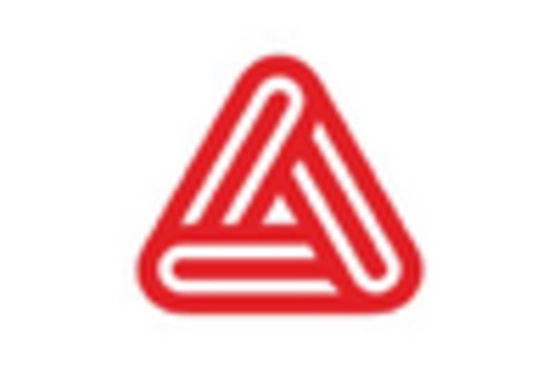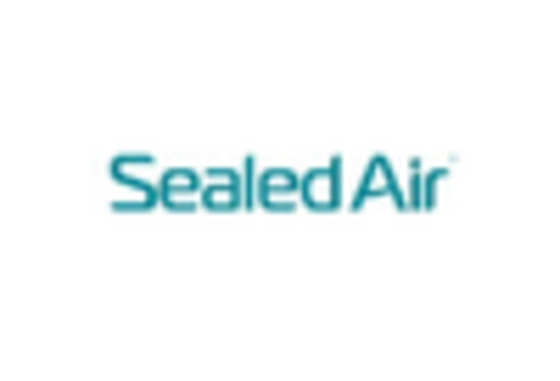E-commerce Growth
The rapid expansion of e-commerce is significantly influencing the Smart Retail Packaging Market. As online shopping continues to gain traction, the demand for packaging that ensures product safety during transit is paramount. The e-commerce packaging market is projected to grow at a rate of 14% annually, driven by the need for efficient and protective packaging solutions. Retailers are increasingly investing in smart packaging technologies that enhance the unboxing experience while ensuring sustainability. This trend not only addresses logistical challenges but also caters to consumer expectations for quality and presentation. Consequently, the Smart Retail Packaging Market is adapting to meet the unique requirements of e-commerce, emphasizing the importance of innovative packaging solutions.
Regulatory Compliance
Regulatory compliance is emerging as a crucial driver for the Smart Retail Packaging Market. Governments worldwide are implementing stringent regulations regarding packaging materials and waste management. These regulations are compelling companies to adopt smarter packaging solutions that comply with environmental standards. The market is witnessing a shift towards materials that are not only functional but also meet regulatory requirements. This compliance is expected to drive innovation in packaging design and materials, with a focus on recyclability and reduced environmental impact. As businesses strive to align with these regulations, the Smart Retail Packaging Market is likely to experience growth, as companies seek to enhance their sustainability profiles while adhering to legal mandates.
Sustainability Initiatives
The increasing emphasis on sustainability is a pivotal driver for the Smart Retail Packaging Market. Consumers are becoming more environmentally conscious, leading brands to adopt eco-friendly packaging solutions. This shift is reflected in the market, where sustainable packaging is projected to grow at a compound annual growth rate of approximately 7.5% over the next five years. Companies are investing in biodegradable materials and recyclable packaging to meet consumer demands. Furthermore, regulatory pressures are compelling businesses to reduce plastic waste, thereby accelerating the adoption of sustainable practices. As a result, the Smart Retail Packaging Market is witnessing a transformation towards greener alternatives, which not only enhances brand image but also aligns with global sustainability goals.
Technological Advancements
Technological integration is revolutionizing the Smart Retail Packaging Market. Innovations such as IoT, RFID, and QR codes are enhancing the functionality of packaging. These technologies enable real-time tracking, inventory management, and consumer engagement, thereby improving operational efficiency. The market for smart packaging solutions is expected to reach USD 50 billion by 2026, driven by the demand for enhanced user experiences and supply chain transparency. Retailers are increasingly adopting smart packaging to provide consumers with interactive experiences, such as accessing product information through mobile devices. This trend indicates a significant shift towards technology-driven solutions in the packaging sector, which is likely to redefine consumer interactions and operational processes.
Consumer Demand for Personalization
The growing consumer demand for personalized products is a key driver in the Smart Retail Packaging Market. As consumers seek unique and tailored experiences, brands are responding by offering customized packaging solutions. This trend is particularly evident in sectors such as cosmetics and food, where personalized packaging can enhance brand loyalty and customer satisfaction. The market for personalized packaging is anticipated to grow significantly, with estimates suggesting a potential increase of 10% annually. By leveraging smart packaging technologies, companies can create dynamic packaging that adapts to individual consumer preferences, thereby fostering deeper connections with their audience. This shift towards personalization is reshaping the Smart Retail Packaging Market, making it a crucial area for innovation.


















Leave a Comment